Peaky Blinders Season 6: How Death Haunts Tommy Through Set Design Details
Production Designer Nicole Northridge unveils the symbolic messages hidden in the sets on Peaky Blinders’ final season. Spoilers.
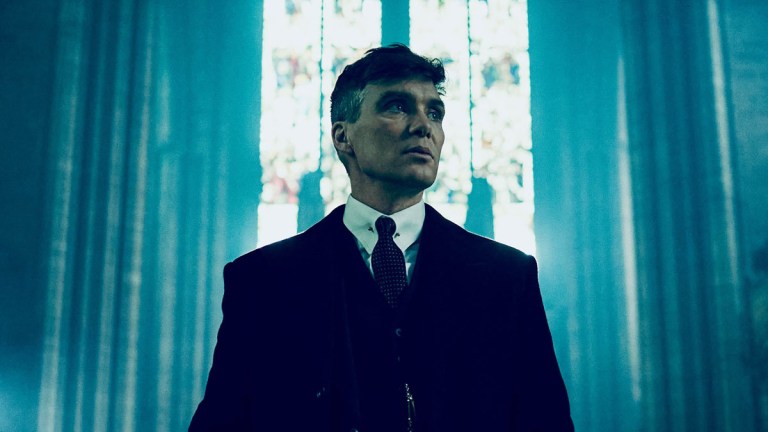
Warning: contains plot spoilers for Peaky Blinders season six 1-6.
Peaky Blinders is a designer’s dream, says Nicole Northridge. The gangster drama’s visual style, mythological swagger and love of symbolism mean that when it comes to designing its sets, “you can absolutely go to town. You can make it abstract, almost like a graphic novel.” The period backdrops and locations aren’t only laboriously researched by production designer Northridge and her art team in collaboration with director Anthony Byrne, but also woven with symbolic story references. Gold, black, white horses, rising suns, images foreshadowing death and evoking the rot of fascism… season six’s backdrops are studded with thematic visual detail, adding extra layers of meaning if you know where to look.
Gold = Money = Death
Visually, season six is dripping with gold, a symbol of the material wealth Tommy Shelby has amassed over more than a decade of gangsterism. From Arrow House’s art deco bathroom to its china plates and the upholstery on its dining room chairs, from the Midland Hotel suite to the sanatorium’s X-ray machine, the characters are surrounded by gold – Tommy most of all.
Combined with black – as it is memorably in the bathroom where Lizzie finds Tommy having a seizure in episode two – gold becomes symbolically connected with death. Specifically, the gold-veined black marble on Tommy’s bathroom walls foreshadows the death of young Ruby from tuberculosis in the next episode, explains Northridge: “It’s very specific to Ruby, the connection between using literal physical gold in the salts which were a supposed cure for TB at the time. I wanted gold-veined black marble to represent gold literally running through her veins. So it was literal gold and also the metaphor – the irony that Tommy can have all the riches in the world but he’s powerless against death. It all means nothing if he can’t save someone he loves.”
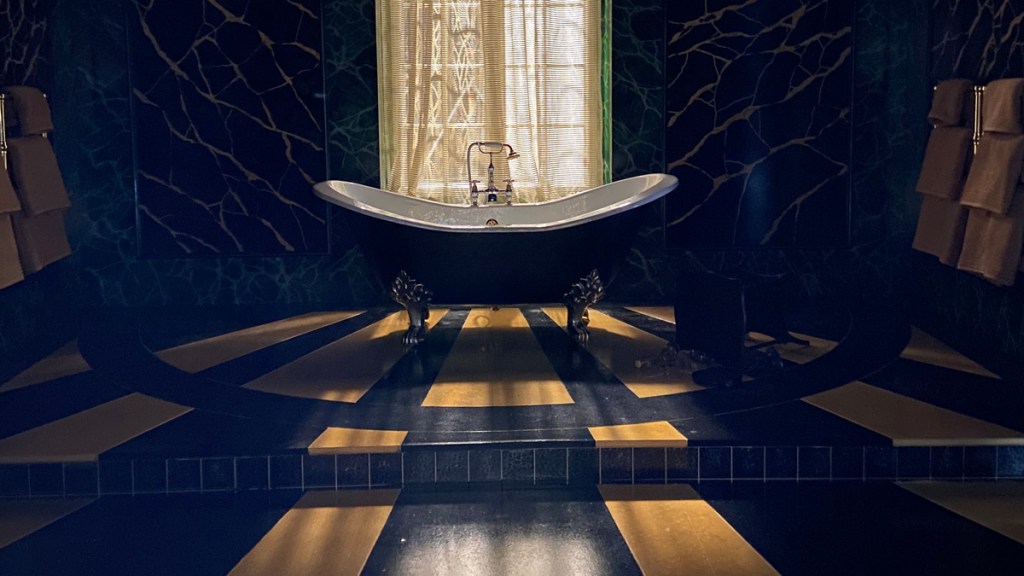
Over the course of season six, Tommy comes to realise that his personal ‘gold’ has brought him nothing good, and so he sheds it. He makes financial arrangements to support his family, endows a fortune to help the poor, blows up Arrow House to build social housing, and hosts a farewell party in the woods. The surreal farewell banquet was inspired by the Mad Hatter’s tea party in Alice in Wonderland, says Northridge, who dressed the woods with ornate, expensive furniture from Tommy’s stately home. “The whole thing is just madness! It’s as if Tommy’s saying he’s finished with the trappings of wealth, it means absolutely nothing to him now. He’s saying ‘if you want to bring a priceless chandelier from my place and hang it in the trees, good luck to you!’” The banquet shows Tommy’s utter disregard for the house and his wealth by the end of the season. “It was the ruin of him in the end, that house, it brought him no luck, and that was his way of turning his back on it all.”
After the feast, Tommy sets off to spend what he thinks are his last days in a plain black Romany vardo that – unlike those featured in the season’s funeral scenes – couldn’t have been less adorned. Its only decoration was an animal skull positioned above door as a memento mori, another image of the death that haunts Tommy throughout the season. Tommy’s stark, oversized vardo was designed to be “looming, dark and Tim Burtonesque with a very deliberate plainness” says Northridge. “It was Tommy going back to the beginning, he shed all his wealth and the gold was gone, the shackles were off and all his possessions were burnt in it, almost like a funeral for Tommy Shelby. It was liberating and freeing for him to shed all those trappings.”
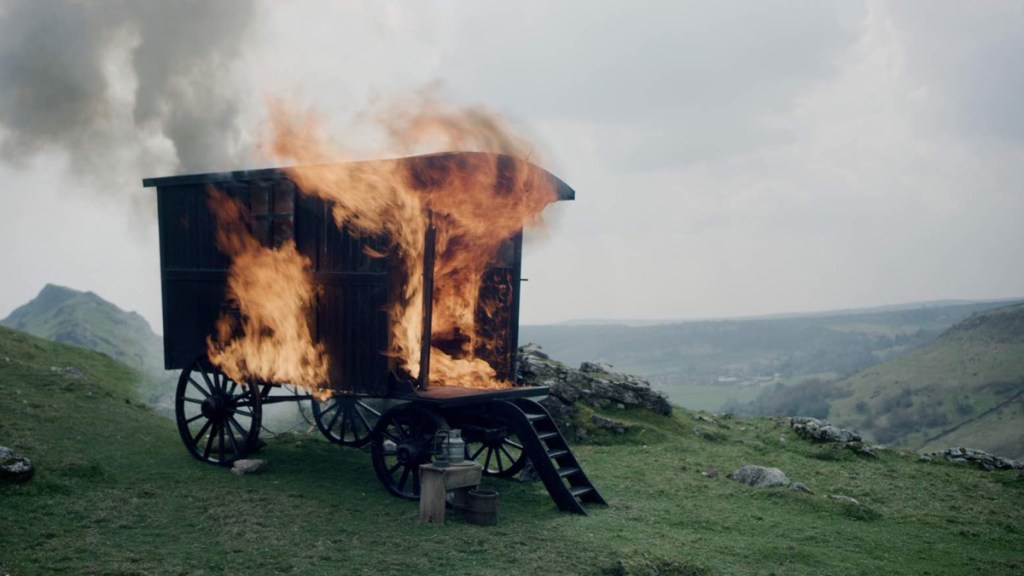
Inside Tommy’s Mind
Season six took us inside Tommy Shelby’s head several times as he suffered from seizures in the form of flashbacks to the WWI trenches. “A lot of the time we didn’t quite know whether we were inside Tommy’s head or whether it was actually happening,” Northridge explains. “That was a little play that we had throughout. Anthony [Byrne, director] devised a way where you’d know that Tommy was about to have an episode because his hands would shake or he’d clench his fist.” That happens in episode three, when Tommy wrestles a German soldier in his office at the Houses of Parliament. “You immediately think, oh my God, what’s happening? Is Tommy being attacked in his office?,” says Northridge. “But then I think it does become clear that it is inside his head, that he’s wrestling with the post-traumatic stress.”
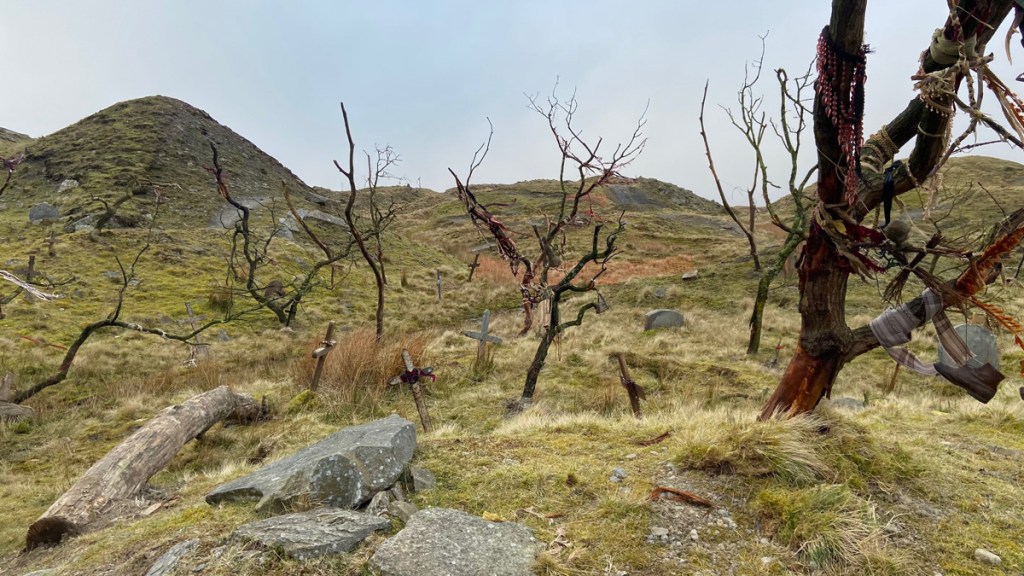
One of Northridge’s favourite season six locations also played with ambiguity between this world and another: the Romany graveyard Tommy and Esme visit in episode three. With Sergio Leone’s Once Upon a Time in the West as one of director Anthony Byrne’s biggest influences on season six (referenced in the Miquelon Harbour scenes and elsewhere), the idea was to create a Western graveyard, overlaid with gypsy motifs. Northridge suggested a petrified forest with gnarled trees, every one of which production had to plant on bare moorland above Lee Quarry in the Rossendale Valley. “All the graves were dressed in, plus the gypsy items like little children’s shoes and toys. It’s going back to the Egyptians in the idea of burying your dead with something that relates to them.”
Making Polly’s Farewell Personal
That Egyptian sarcophagi theme recurred in season six with the funeral vardos for the characters of Polly and Ruby. After John’s funeral in season four, a tradition was established that members of the Shelby family are cremated in their own gypsy wagons with personalised decoration. “Polly’s was heart-breaking, we were all very lost for words for that,” says Northbridge.
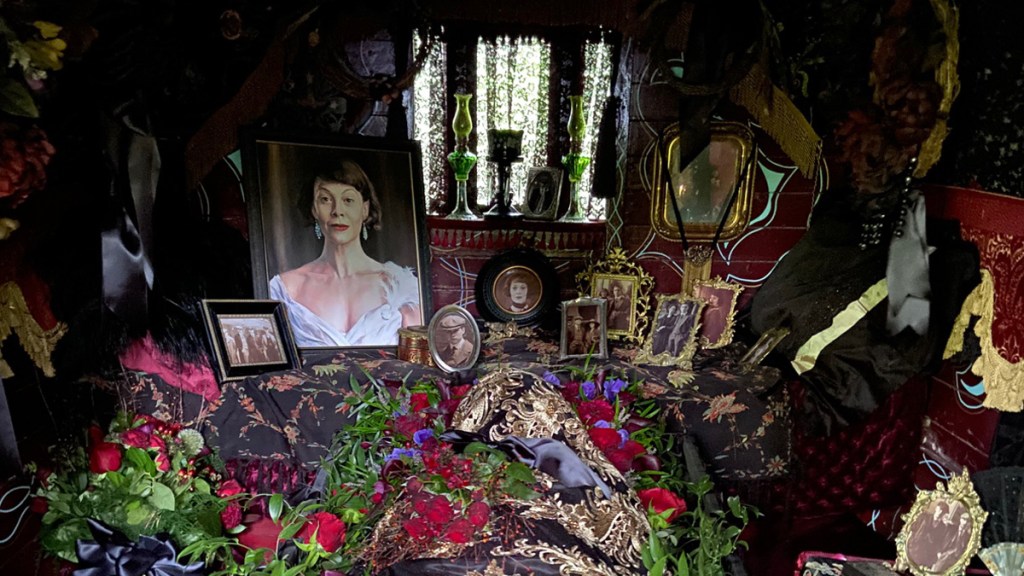
Polly’s farewell scene was a late rewrite necessitated by the death from cancer of actor Helen McCrory. Her character Polly Gray was originally part of the season, but the delay to filming caused by the Covid-19 lockdown meant that she was too unwell to film by the time production resumed.
“Outside the vardo was black, but we wanted to show Polly’s delicate gypsy side so we had roses painted on it.” Inside, portrait artist Rebecca Foster had just four weeks to produce the beautiful portrait of McCrory in character that was among Polly’s possessions. “We got it repainted specifically for Polly’s farewell. We also flooded her vardo with items, photographs of her from series one to the end, and things like her silver gun, a lot of Polly’s clothes, some boots that were special to her.” Costume designer Alison McCosh told Northbridge which items were particularly significant to Polly, including her boots and gloves, so they were added to the collection of treasures. Though Northbridge stresses that it was the character and not Helen being said goodbye to in that scene, she recalls the first crew screening being an emotional experience. “There were a lot of people in tears, a lot of eyes being dried. It was very powerful.”
Ruby’s Hidden Birds and a Secret Nod to Grace
The vardo decorated for Ruby Shelby’s funeral in episode four was filled with details not seen in shot. Her coffin “had to be black with a little gold around the edges” to continue the season theme, says Northridge, “but that didn’t make it very child-friendly and we wanted to tug on the heartstrings, so it was beautifully painted with gorgeous vines, each with a little animal and culminating in the white horse, which symbolises Ruby.” Inside Ruby’s vardo were teddy bears, toys, baby’s clothes, family photographs and strings of decorative paper birds.
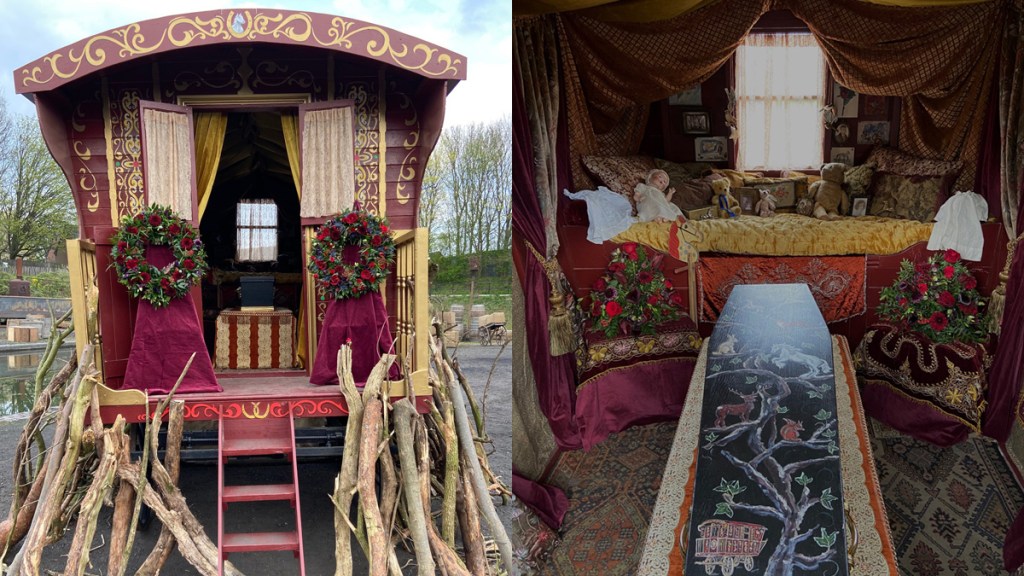
Many more funereal elements were created for Arrow House but not seen on screen. The art team made gypsy wreaths specific to Ruby with black feathers and white horses, to line the dining room in the scenes after the funeral. “It was almost kind of Victoriana, when people used to photograph their dead children. The wreaths never really got seen because when Tommy was sitting there destroyed, it fell to dark in the background.”
Another little-seen detail comes in Ruby’s bedroom, where a toy theatre was made to mirror Tommy’s office at the Shelby company. “We did the same large window in the background, and then we had cut out characters representing Tommy and Polly and Lizzie and then the white horse again.”
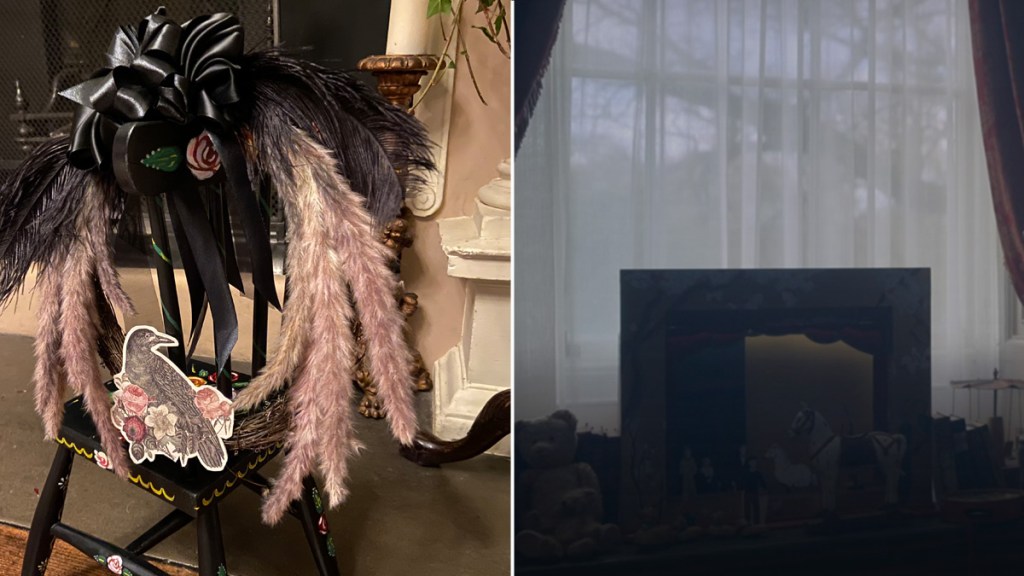
A golden canopy hangs over Ruby’s bed, with a custom-made mobile containing stars, moons and – an Easter Egg reference to another character – a swan. In season five, the swan became a symbol of Tommy’s first wife Grace. “Realistically, Ruby is not connected to Grace but it’s just such a beautiful motif, you want to try to include it. So yes, we had Grace in mind when we designed that little swan.” The lush vegetation on Ruby’s wallpaper mural concealed “little dead birds and little tiny bones” says Northridge. “We were saying that she was a small, delicate bird and now she’s gone. We wanted to make it as if she was in the jungle and in the undergrowth. The scenes of decay in that wallpaper were very subtle and nobody would have picked up on them but it was just enough to be subconsciously unsettling and for Anthony [Byrne, director] to know it was there.”
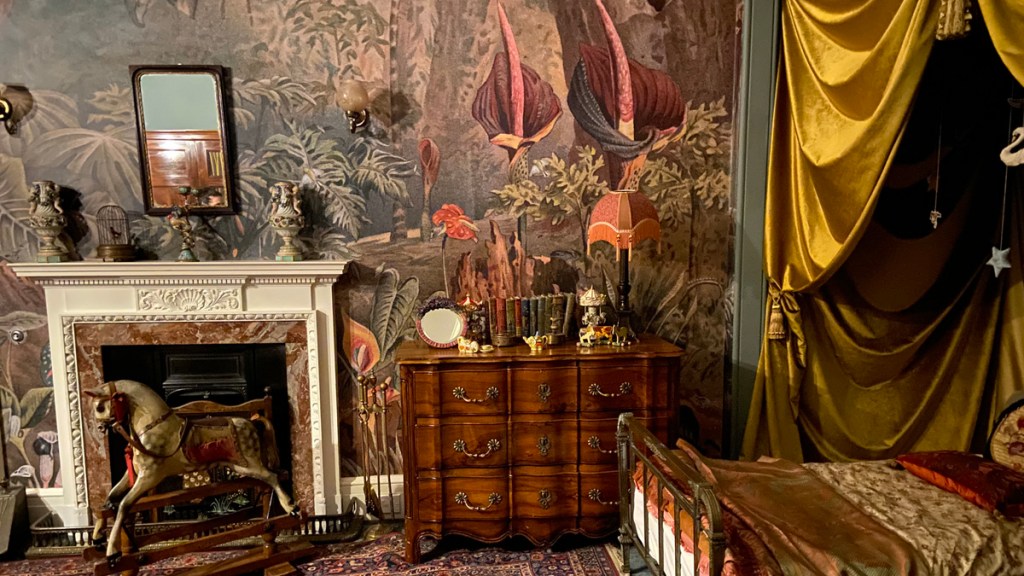
For similarly nuanced details, see the wallpapers used in the Chinatown opium den, which contained dragon motifs “for the idea of chasing the dragon,” and the hellish sight of “people being ripped apart and eviscerated and hot pokers being stuck into them to show almost the living hell that Arthur was going through in his addiction.” Another infernal reference came in Tommy’s episode two’s visit to Alfie Solomons. “We gave Alfie a floating pool of light because he’s always in and out of darkness and you never know whether he’s real or in somebody’s imagination. That was the descent down to hell and Alfie still being the King of Hell!”
The Rot of Fascism
A sense of decay was evoked whenever Oswald and Diana Mosley, real-life fascist politicians and – along with Jack Nelson, this season’s main villains – were seen on screen. In Diana’s Belgravia house, for instance, nothing could feel as if it were fresh or living. “While Diana had this beautiful, grand house, we wanted it to feel like it was degrading and decaying.” Taxidermied animals and birds were kept behind glass, “things that were once beautiful trapped and lifeless,” as Northridge puts it. “We had mirrors and lamps with coiling snakes, and urns with snakes as the urn handles.” Everything had to be dramatic and overbearing and predatory, from the serpents to the golden eagle statue. “It was to show what horrible bastards they actually were,” says Northridge. The sense of decay even followed the Mosleys around. “When they come to Arrow House in episode four, the flower displays on the dining table were all twisted and sharp. Wherever they went, we wanted decay to follow them, like the rot of fascism.”

Fascist symbols also made a subliminal appearance in an episode three scene. When Tommy and Lizzie take Ruby to the Shelby Sanatorium, they have X-rays taken. Tommy stands inside the complicated machinery and behind him is a metallic vent in the shape of a rising sun, a symbol repeatedly associated with his journey from PTSD to freedom throughout the show’s seasons.
The rays of this particular rising sun though, are formed of lightning bolts, like the one seen on Oswald Mosley’s rally banners. “The lightning bolt was tri-fold. Was it something that was in Tommy’s head? Was it the sign for something dangerous and electrical, because X-rays were relatively new at the time and could be scary and horrifying? And then it was the fascist symbol interfering with his rising sun, because that’s the threat he’s facing. It was all that symbolism to try to throw it into one hit.”
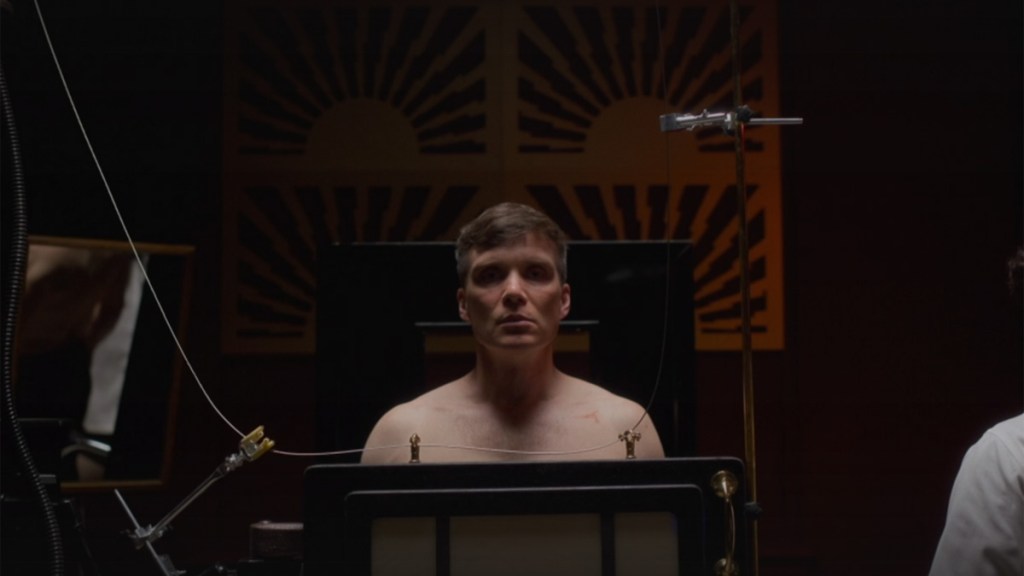
Rising Suns and the White Horse of Hope
The rising sun, also seen outside on the Shelby Sanatorium sign, was seen once again in Tommy’s art deco bathroom, in which golden rays radiated out on the raised dais on which the bath stood. The symbol originated in Series 5, says Northbridge. “We started that motif when I designed the stained glass in the windows for The Garrison Tavern, the rising sun to represent the hope, the eternal hope of Tommy.” In season five, the character’s arc took a turn towards redemption, as the gangster millionaire began to weigh his sins and started to want to do good work instead of bad.
Tommy’s story on the TV show, which is planned to be followed by a final film, concludes with an image of hope. In season one, episode one, the character entered the Small Heath slums on a black horse. At the end of season six, after his possessions were destroyed and his ‘funeral’ had allowed him the freedom to escape himself, he rode away on a white horse. Northridge found the mirroring poetic and beautiful. “The white horse of hope we established on the Shelby Gin label in Series 5 – that was something Anthony was very passionate about – we carry that through to Series 6. It represents hope, and heartbreakingly, it also represents Ruby.”
